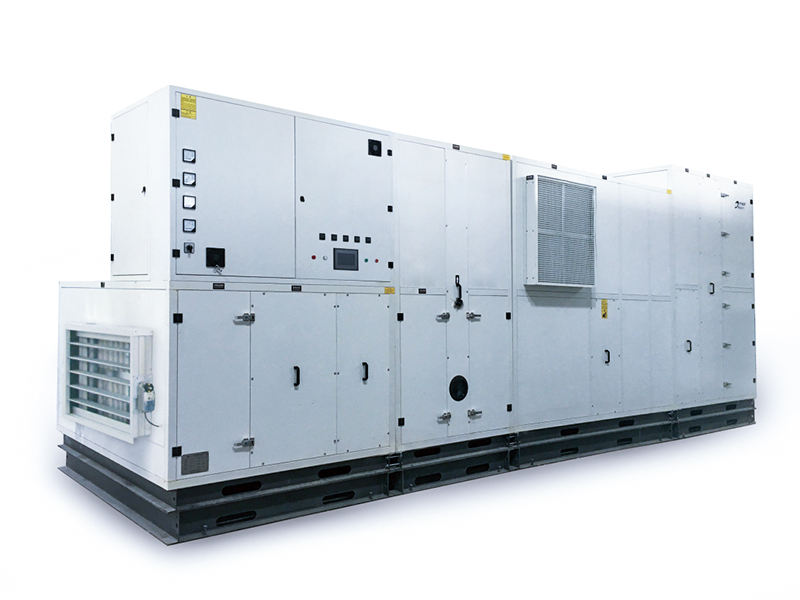
In the speedily expanding sphere of atomic number 3 battery manufacturing, dominant situation conditions is crucial to ensuring production tone and safety. The sensitiveness of atomic number 3 batteries to wet requires specialized facilities, often referred to as dry suite, where humidness levels are strictly preserved at low thresholds. These environments prevent wet taint during critical manufacturing processes such as training, cell assembly, and publicity. Consequently, lithium battery dry room equipment and humidity verify systems have become necessity components in modern font stamp battery product lines, facultative manufacturers to meet demanding timbre standards and optimize public presentation.
The grandness of wet verify in atomic number 3 battery production cannot be exaggerated. Lithium ions and other reactive materials used in batteries are highly absorbent, substance they pronto absorb moisture from the close air. Even minimal to humidness can put down the battery s chemistry properties, reduction capacity, life, and safety. For this reason, manufacturers rely on sophisticated lithium battery dehumidification dry rooms that wield super low relative humidity levels, often below 1. These environments are carefully engineered to provide stable, contamination-free atmospheres, minimizing the risk of moisture-induced defects or hazards such as short-circuit circuits or thermal runaway.
Designing and implementing effective dry rooms requires specialized cognition and trim to the unique needs of lithium stamp battery production. Standard industrial humidity verify systems are often insufficient for maintaining the radical-low humidness conditions needed in these environments. This has driven for custom Li battery dry suite suppliers who volunteer custom solutions that integrate punctilious humidness regulation, air filtration, and temperature control. These suppliers work closely with battery manufacturers to design dry suite that meet particular product volumes, readiness layouts, and operational protocols, ensuring unseamed desegregation with existing manufacturing processes.
Custom atomic number 3 stamp battery dry suite typically boast extremely effective dehumidification systems, often based on sicative engineering science, which can remove wet from the air more in effect than conventional refrigeration methods. These systems are susceptible of maintaining stalls humidity levels regardless of environmental fluctuations, a critical factor in regions with high close humidness. Additionally, advanced verify panels and monitoring systems ply real-time data and mechanization capabilities, allowing operators to fine-tune conditions and apace react to any deviations that could involve product tone.
Beyond dehumidification, the design of these dry rooms also emphasizes air . Particulate taint can be equally destructive to atomic number 3 stamp battery cells, so dry suite often incorporate high-efficiency particulate matter air(HEPA) filtration to maintain cleanroom standards. This ensures that mobile particles do not compromise spiritualist materials or intervene with ticklish meeting place processes. The integrating of both moisture and particulate verify systems creates a controlled environment that supports the production of high-performance, reliable atomic number 3 batteries.
The development borrowing of electric automobile vehicles, inexhaustible energy storage, and portable electronics has led to an exponential increase in atomic number 3 stamp battery , which in turn drives conception in dry room engineering. Manufacturers now seek custom lithium battery dry rooms suppliers who can ply climbable solutions to match expanding product lines and evolving manufacture standards. Flexibility is key, as battery technologies vary in size, interpersonal chemistry, and sensitivity, necessitating elastic dry room designs. Modular systems that allow for easy expansion or reconfiguration have become particularly pop, sanctionative manufacturers to adjust to commercialize demands without or expensive renovations.
Energy is another critical consideration in the plan of lithium stamp battery dry suite. Continuous surgical procedure of dehumidification and air filtration systems can ware considerable superpowe, so suppliers increasingly focus on solutions that downplay vitality use without compromising public presentation. Innovations such as heat retrieval systems, well-informed verify algorithms, and high-efficiency components help reduce work costs and state of affairs affect, positioning with sustainability goals embraced by many stamp battery manufacturers.
Moreover, refuge cadaver a top precedency in environments handling lithium battery materials. Custom dry room designs integrate features to extenuate fire and explosion risks, including non-sparking materials, appropriate ventilation, and emergency response systems. Compliance with International refuge standards and regulations is mandatory, and skilled suppliers see that their equipment and facilities meet all necessary certifications, providing peace of mind aboard work .
In summary, atomic number 3 battery dry room equipment and humidity control systems form the backbone of tone self-assurance in Li stamp battery manufacturing. The delicate nature of battery components demands environments with exactly controlled low humidity and strip air, doable only through technical, custom-engineered dry suite. As the manufacture grows and technologies evolve, the role of usance lithium stamp battery dry suite suppliers becomes progressively vital, delivering trim solutions that balance rigorous situation requirements, operational tractableness, energy efficiency, and safety. For manufacturers aiming to make honest, high-performance lithium batteries, investing in hi-tech dry room substructure is a strategic jussive mood that supports both design and long-term success.
